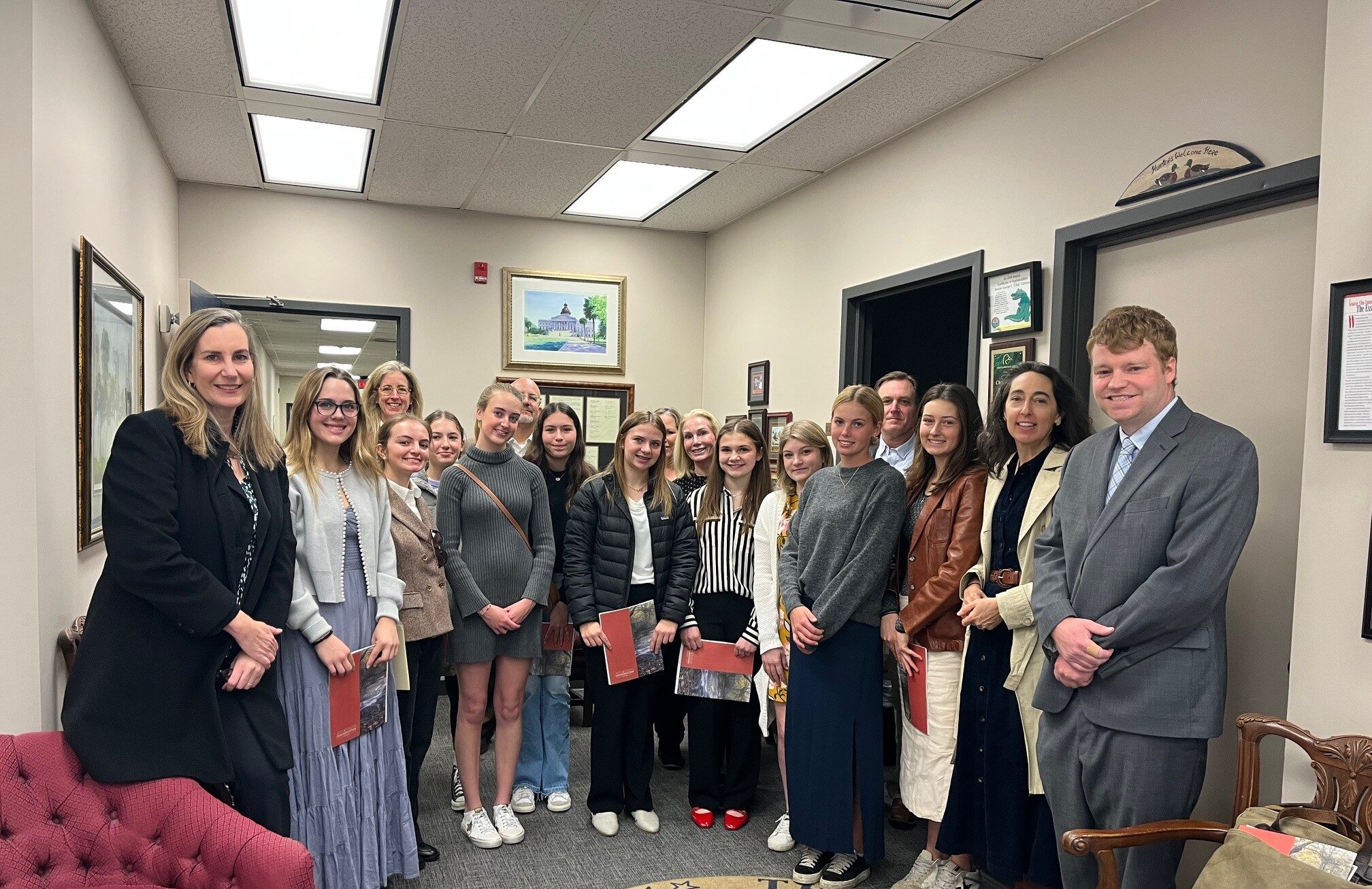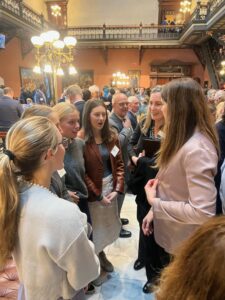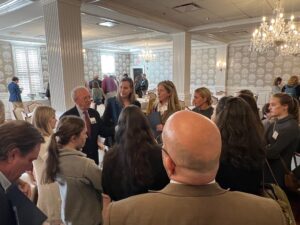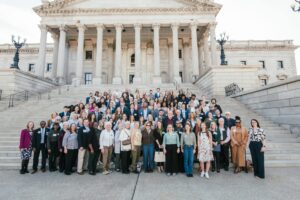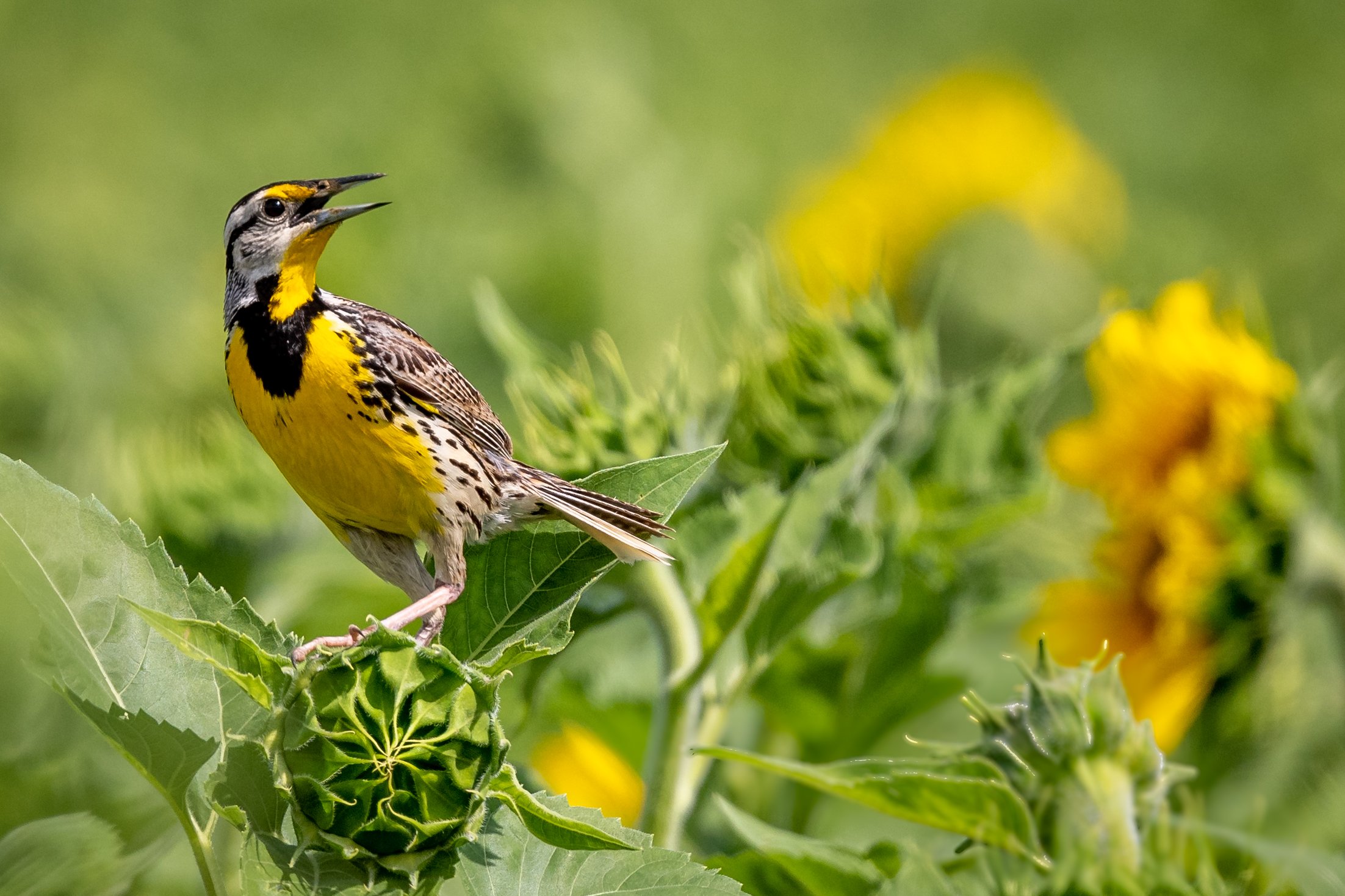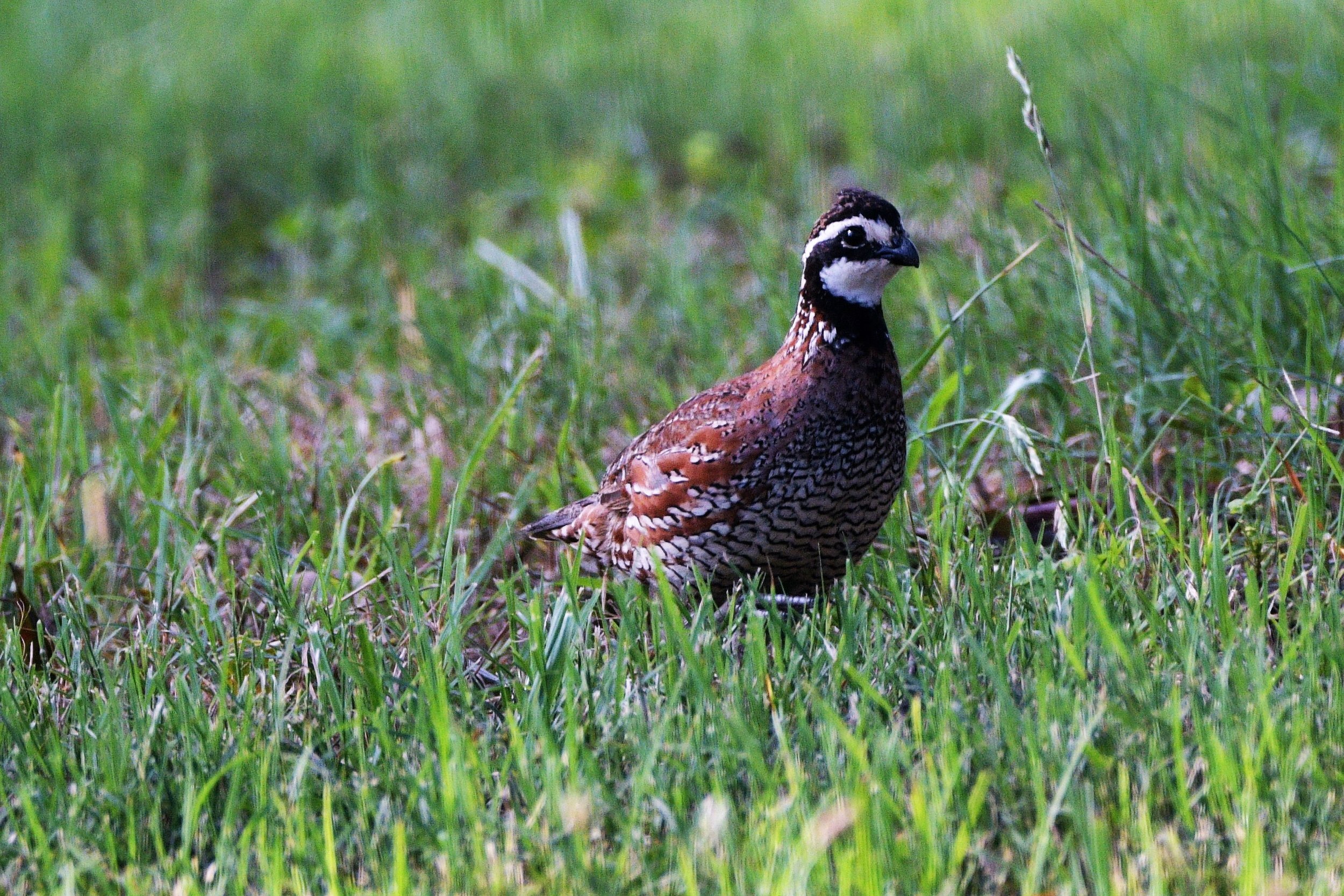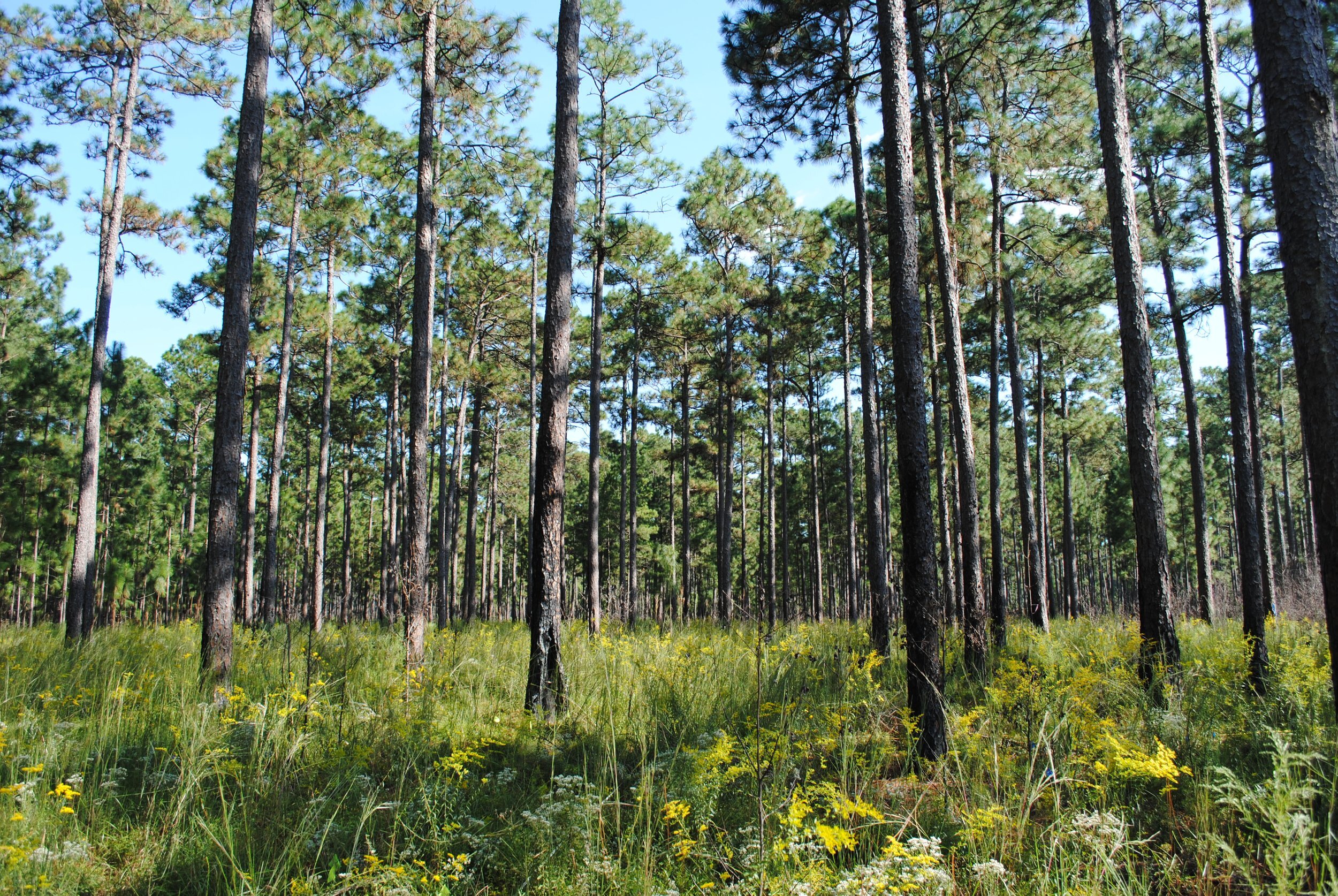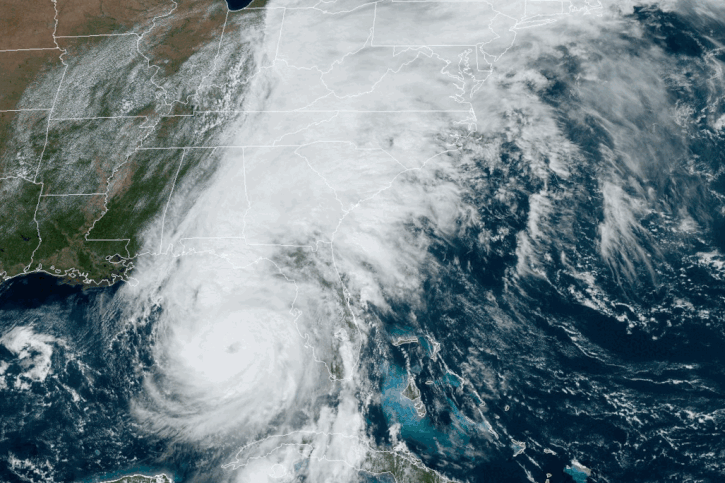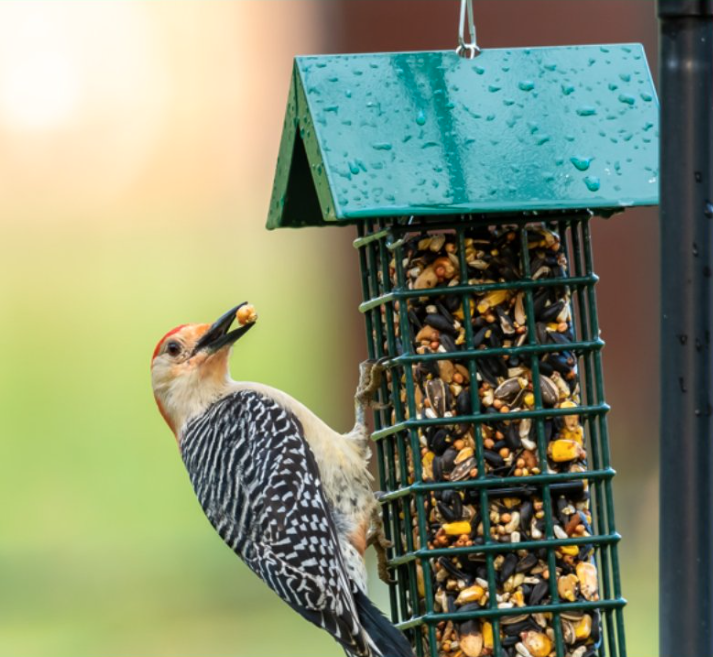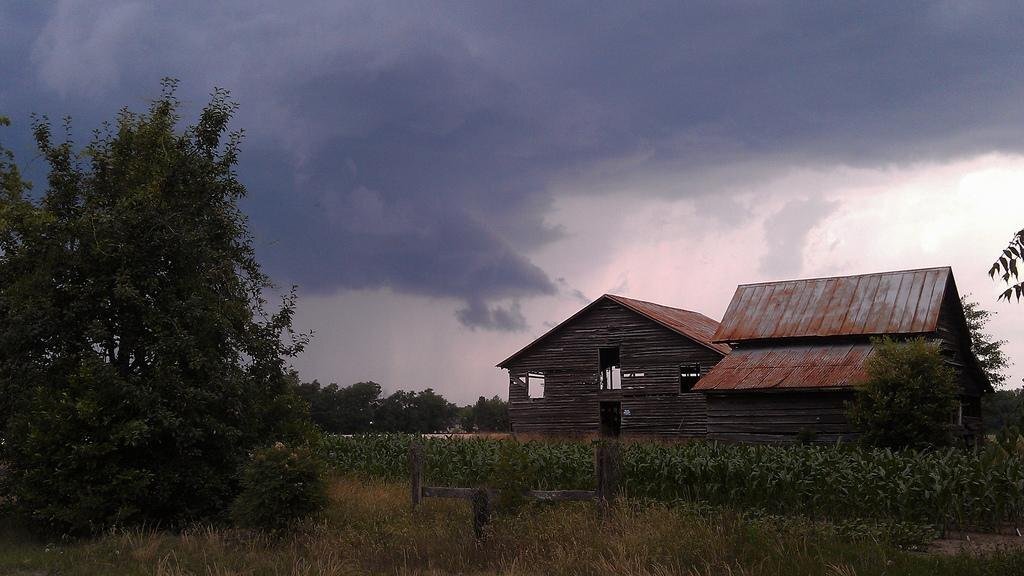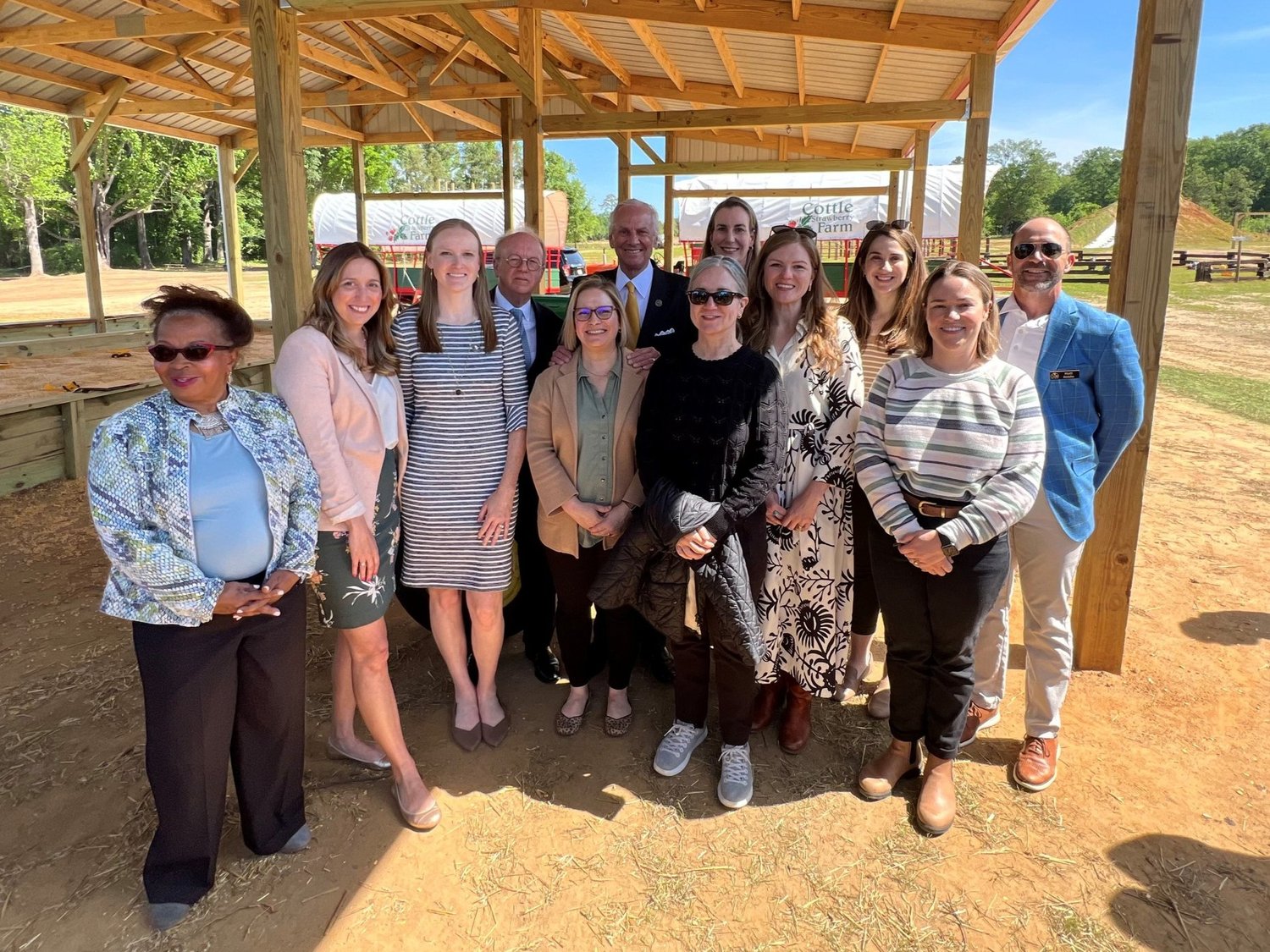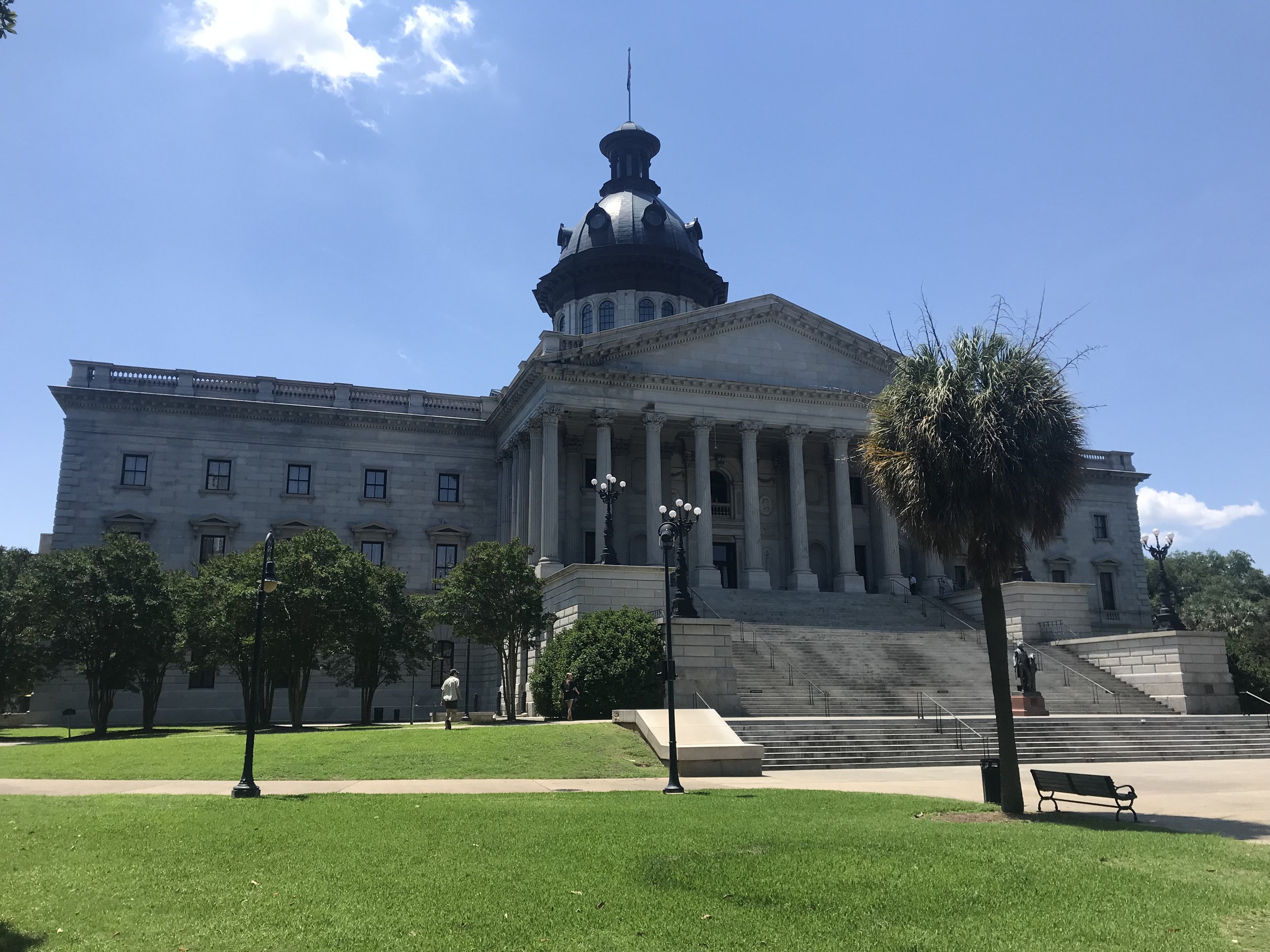South Carolina takes a huge step forward for wildlife habitat enhancement
Native plants have formed symbiotic relationships with native wildlife over thousands of years, and therefore offer the most sustainable habitat for wildlife. The South Carolina Wildlife Federation (SCWF) and several of our conservation partners drafted a concurrent resolution to “recognize the essential value and importance of South Carolina native plants to the state’s environment, landscape, agriculture, history, and economy, and to encourage State agencies, local governments, and private landowners to use native plants for landscaping, erosion control, and vegetation management whenever possible to promote the viability of migratory and nonmigratory pollinators and to help to preserve South Carolina’s unique flora and fauna.” This Resolution passed the SC Legislature on April 23, 2025.
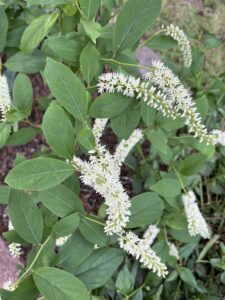 “Passage of this resolution shows that SC leaders value the natural beauty of our state, and have a desire to preserve the essential habitats on which our wildlife depend,” said Sara Green, SCWF executive director. “This is a critical time to enhance habitat for wildlife – our state has more than twice as many species of concern as we did only 10 years ago. Our organization stands ready to assist anyone who needs additional information about native plants valuable to wildlife.”
“Passage of this resolution shows that SC leaders value the natural beauty of our state, and have a desire to preserve the essential habitats on which our wildlife depend,” said Sara Green, SCWF executive director. “This is a critical time to enhance habitat for wildlife – our state has more than twice as many species of concern as we did only 10 years ago. Our organization stands ready to assist anyone who needs additional information about native plants valuable to wildlife.”
A plant is considered native if it has occurred naturally in a particular region, ecosystem, or habitat without human introduction. Exotic plants that evolved in other parts of the world or were cultivated by humans into forms that don’t exist in nature do not support wildlife as well as native plants. Occasionally, they can even escape into the wild and become invasive exotics that destroy natural habitat. Native plants help the environment the most when planted in places that match their growing requirements.
They will thrive in the soils, moisture and weather of your region. That means less supplemental watering, which can be wasteful, and less pest problems that require toxic chemicals. Native plants also assist in managing rainwater runoff and maintain healthy soil as their root systems are deep and keep soil from being compacted. Discovering the native plants where you live can also define a unique sense of place and heritage for your garden habitat while preserving the natural history of the flora and fauna of your region.
Native plants often provide food for wildlife in the form of berries, seeds, nuts or nectar. Some wildlife will eat the leaves too, including caterpillars. Native plants also provide shelter and nesting sites for wildlife.
There are a wide variety of native options for any landscaping need. To assist in using native plants for landscaping, the SCWF website’s Native Plant page has a long list of native plants which are valuable to wildlife, as well as a list of local plant nurseries which sell natives: https://www.scwf.org/native-plants/
SCWF also has a partnership with Gardening for Wildlife where you can mail order native plants: https://fundraising.gardenforwildlife.com/1i2qgt
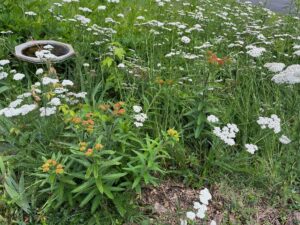 Native oaks and maples are great options for large trees, as well as smaller trees like dogwoods, red bud, paw paw, and sassafras. Examples of native garden plants which are beautiful and also have value for wildlife include: coreopsis, black-eyed susans, joe-pye weed, yarrow, bee balm, columbine, and milkweeds.
Native oaks and maples are great options for large trees, as well as smaller trees like dogwoods, red bud, paw paw, and sassafras. Examples of native garden plants which are beautiful and also have value for wildlife include: coreopsis, black-eyed susans, joe-pye weed, yarrow, bee balm, columbine, and milkweeds.
To recognize the efforts of landowners who incorporate native plants for habitat, properties can become Certified Wildlife Habitats through the SCWF and the National Wildlife Federation. This designation ensures valuable habitat while also helping to educate neighbors and community members about the needs of wildlife. Even larger properties such as industrial sites can be certified through SCWF’s Wildlife And Industry Together (WAIT) program. Companies like BMW, Honda, Michelin, Duke Energy, and others have already converted their unused lands to wildlife habitat. If homeowners, business owners and local governments work together, the whole neighborhood or town can be certified through the Community Wildlife Habitat program. All of these programs focus on native plants and other habitat elements and sustainable gardening practices.
South Carolina’s new Native Plant Resolution furthers efforts by the General Assembly in the past. In 2017, a bill designated the third week of every October as Native Plant Week in SC. In 2018, the “Solar Habitat Bill” created guidelines for using native plants at large scale solar installations.
Here is the full text of the new Native Plant Resolution:
Whereas, South Carolina’s native plants provide iconic, economic, artistic, historical, and environmental values, unparalleled for beauty and unique to the history of the State and its future; and
Whereas, native plants are those which occur naturally in the specific regions in which they evolved, including our estuarine and tidal freshwater, maritime strand, freshwater wetlands, river and palustrine forested wetlands, and associated coastal uplands; and
Whereas, South Carolina contains over four thousand native plant species, subspecies, and varieties, making South Carolina home to a tremendously rich and diverse plant life, and twenty-one of those species are considered to be threatened or endangered; and
Whereas, maintaining and restoring the native plant habitat in South Carolina is vital to preserving South Carolina’s present and future biodiversity amid a changing environment; and
Whereas, native plants are more drought-tolerant, provide essential food sources for insects, birds, and wildlife, and require less water. They also act as natural pollinators and help filter out fertilizers and chemicals, promoting water conservation and improving the quality of stormwater runoff. Additionally, native plants enhance the resilience of ecosystems in South Carolina; and
Whereas, native plants provide high-quality food and shelter for more than three hundred resident and migratory bird species in South Carolina, one hundred sixty-one of which are species of greatest conservation need; and
Whereas, South Carolina currently contends with over ninety invasive and exotic plants, many of which compete with native plant species, degrade soil, facilitate erosion, require more fertilizers and chemicals, provide fewer food sources to native birds and other wildlife, and alter the state’s natural landscapes; and
Whereas, the state’s original Native American residents lived and thrived by knowledge of native plants which provided generations with food, clothing, shelter, dyes, tools, medicines, and fuel; and
Whereas, from the state’s earliest time, native flora and fauna have provided a rich landscape, inspiring and influencing notable literary and artistic works by internationally recognized figures and thereby securing South Carolina’s legacy in natural heritage; and
Whereas, South Carolina’s native plants and their derivatives have provided essential foods, medicines, and other products of global import since the colonial period, while native plants, such as sweet grass and Carolina yellow jessamine, play an important role in the state’s cultural heritage; and
Whereas, native plant horticulture contributes significantly to the state’s economy and employs thousands of South Carolinians, providing a thriving, vital, and ever-expanding industry, who do their part to preserve, protect, and restore precious native habitats by using South Carolina native plants whenever possible for landscaping, erosion control, and vegetation management; and
Whereas, the state’s native plants provide essential watershed protection, helping natural aquifers recharge, serving to filter water naturally flowing into rivers and estuaries, lessening erosion and flooding, and supporting rich biodiversity in birds and wildlife; and
Whereas, gardens and landscapes comprised of South Carolina’s native plants require far fewer fertilizers, soil amendments, or pesticides, and use significantly less water compared to nonnative plants; and
Whereas, pollinators such as birds, bees, and insects, including migratory butterflies, hummingbirds, and other threatened species, depend on the biodiversity of native plants for their survival; and
Whereas, many native South Carolina plants have played a vital role in state and national history, compelling the United States Congress, the State of South Carolina, and many local communities throughout the State to protect the beauty, power, and grandeur of our wild spaces; and
Whereas, planting, restoration, preservation, and cultivation of the state’s indigenous plants provides a natural link to wild land areas present and past, while presenting beauty and benefit and instilling a greater appreciation for South Carolina’s natural heritage; and
Whereas, this resolution is not state law. It is merely intended to encourage the people of South Carolina to plant and foster the growth of plants native to South Carolina.
Now, therefore,
Be it resolved by the House of Representatives, the Senate concurring:
That the members of the South Carolina General Assembly, by this resolution, recognize the essential value and importance of South Carolina’s native plants to the state’s environment, landscape, agriculture, history, and economy and encourage all state agencies, local governments, and private landowners to use native plants for landscaping, erosion, and vegetation management whenever possible to promote the viability of migratory and nonmigratory pollinators and to help to preserve South Carolina’s unique flora and fauna.
Be it further resolved, that the Department of Administration is urged to circulate this concurrent resolution to all state agencies and state governmental units engaged in or overseeing the landscaping or grounds maintenance of properties so that they are made aware of the General Assembly’s interest in this matter.
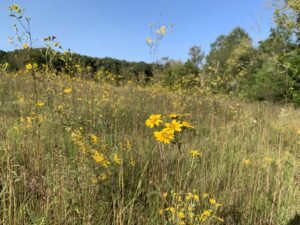
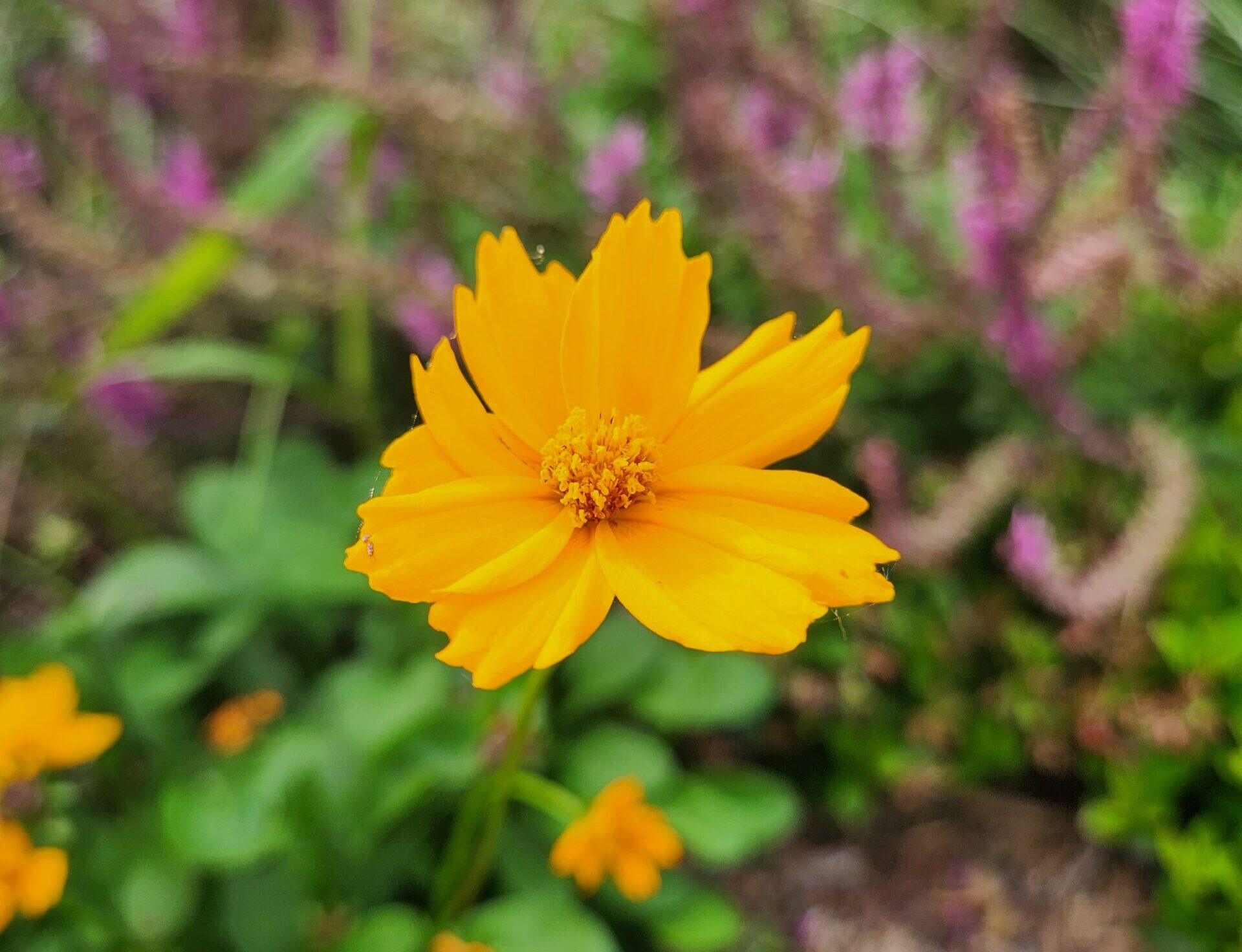




 The dark skies allow the migrating birds to avoid predators, take advantage of calmer air, and utilize the moon and stars for navigation. However, as birds pass over communities and cities on their way, they can become disoriented by bright artificial lights and skyglow. Some birds become casualties of nighttime collisions with windows and walls. Others circle in confusion until dawn, when they land exhausted and are subject to other urban threats. This issue impacts hundreds of species, including priority species such as the wood thrush and the seaside sparrow.
The dark skies allow the migrating birds to avoid predators, take advantage of calmer air, and utilize the moon and stars for navigation. However, as birds pass over communities and cities on their way, they can become disoriented by bright artificial lights and skyglow. Some birds become casualties of nighttime collisions with windows and walls. Others circle in confusion until dawn, when they land exhausted and are subject to other urban threats. This issue impacts hundreds of species, including priority species such as the wood thrush and the seaside sparrow.
